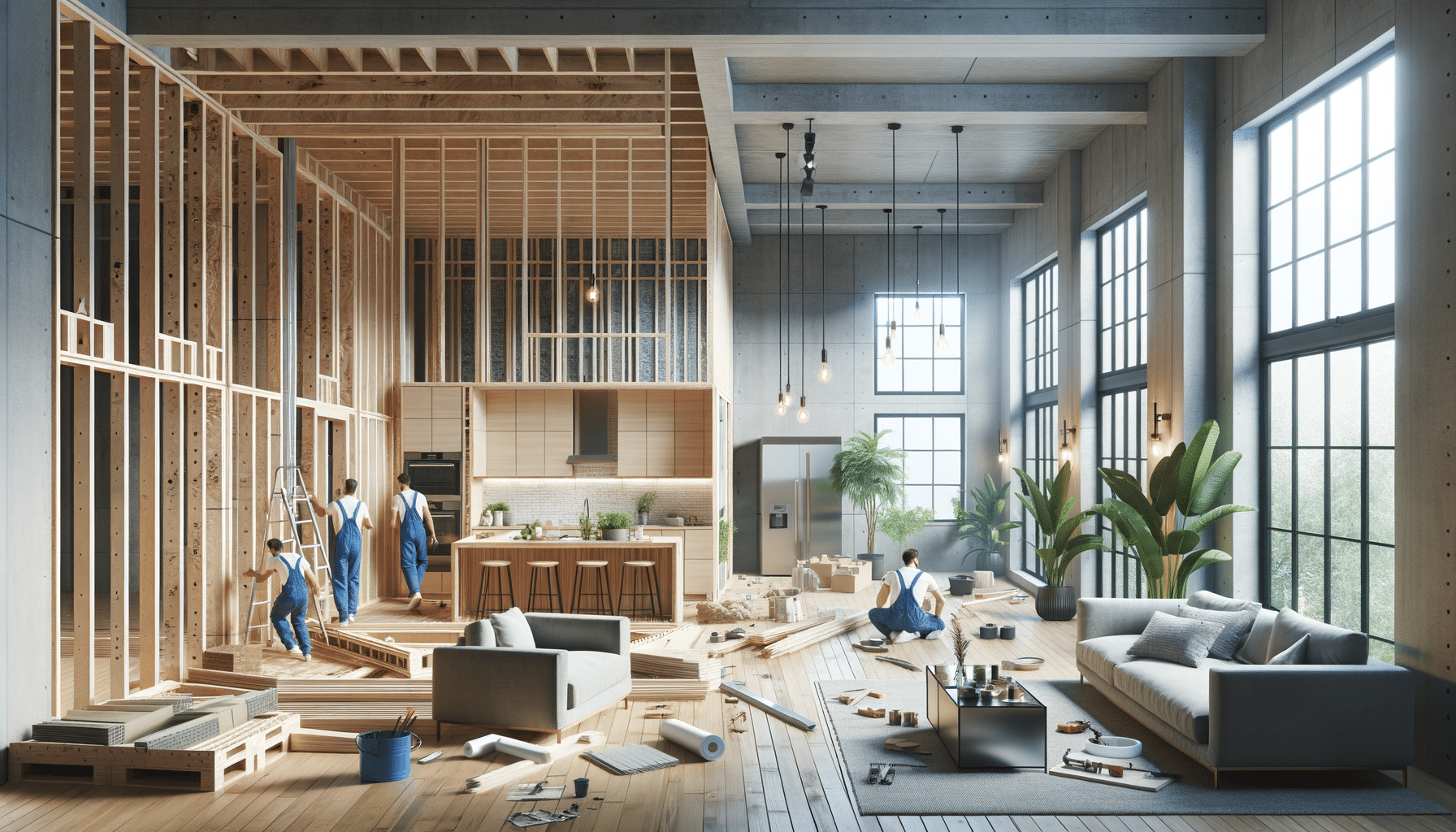
Home Renovation: Transforming Spaces with Style and Functionality
Introduction to Home Renovation
Home renovation is a journey of transforming spaces to enhance both aesthetics and functionality. As lifestyles evolve, so do the needs and preferences of homeowners, making renovation an essential aspect of maintaining and improving living environments. Whether you’re looking to update a single room or undertake a full-scale remodel, understanding the nuances of home renovation can help you achieve a space that reflects your personal style while meeting practical needs.
The importance of home renovation extends beyond mere aesthetics. It can significantly increase property value, improve energy efficiency, and enhance the overall quality of life. With a well-planned renovation, you can create a home that not only looks beautiful but also functions effectively for your daily activities.
Planning Your Home Renovation
Effective planning is the cornerstone of any successful home renovation project. Before diving into the renovation, it’s crucial to establish clear objectives and a realistic budget. Consider the following steps to lay a solid foundation for your renovation:
- Define your goals: Determine what you want to achieve with the renovation, whether it’s improving functionality, updating aesthetics, or increasing property value.
- Set a budget: Establish a financial plan that includes all potential costs, from materials and labor to permits and unexpected expenses.
- Research and gather inspiration: Explore design ideas and trends to identify styles and features that resonate with your vision.
- Consult professionals: Engage with architects, designers, and contractors to gain expert insights and ensure your project is feasible.
By carefully planning each aspect of the renovation, you can mitigate risks, control costs, and streamline the execution of your project.
Incorporating Sustainable Practices
Incorporating sustainable practices into your home renovation not only benefits the environment but can also lead to long-term savings. Sustainable renovation focuses on using eco-friendly materials, improving energy efficiency, and reducing waste. Here are some strategies to consider:
- Use sustainable materials: Opt for materials like bamboo, reclaimed wood, and recycled metal that have a lower environmental impact.
- Improve energy efficiency: Install energy-efficient windows, insulation, and appliances to reduce energy consumption.
- Minimize waste: Plan your renovation to minimize waste by reusing materials and recycling whenever possible.
- Consider renewable energy: Explore options for solar panels or other renewable energy sources to power your home.
By prioritizing sustainability, you can create a healthier living environment and contribute to a more sustainable future.
Maximizing Space and Functionality
One of the primary goals of home renovation is to maximize space and functionality. Whether you’re working with a small apartment or a large house, optimizing the use of space can enhance your living experience. Consider the following tips:
- Open floor plans: Removing unnecessary walls can create a more spacious and connected living area.
- Multi-functional furniture: Invest in furniture that serves multiple purposes, such as sofa beds or extendable dining tables.
- Smart storage solutions: Incorporate built-in storage, shelving, and cabinets to keep your home organized and clutter-free.
- Flexible spaces: Design rooms that can adapt to different uses, such as a home office that doubles as a guest room.
By focusing on space and functionality, you can create a home that meets your needs and enhances your lifestyle.
Embracing Design Trends
Staying updated with design trends can add a modern touch to your home renovation. While trends evolve, some elements remain timeless and can be incorporated to create a stylish and contemporary space. Here are a few trends to consider:
- Natural materials: Incorporate materials like wood, stone, and metal for a warm and organic feel.
- Bold colors: Use bold and vibrant colors to add personality and make a statement in your home.
- Minimalist design: Focus on simplicity and functionality with clean lines and uncluttered spaces.
- Biophilic design: Integrate nature into your home through indoor plants, natural light, and outdoor views.
By embracing design trends, you can create a home that is both stylish and reflective of your personal taste.
Conclusion: Transforming Your Home with Purpose
Home renovation is more than just a makeover—it’s an opportunity to transform your living space into a reflection of your personal style and functional needs. By carefully planning and incorporating sustainable practices, maximizing space, and embracing design trends, you can create a home that is both beautiful and practical.
Whether you’re a seasoned renovator or a first-time homeowner, approaching your renovation with purpose and creativity can lead to a rewarding and satisfying experience. As you embark on this journey, remember that each decision you make contributes to the creation of a space that truly feels like home.


